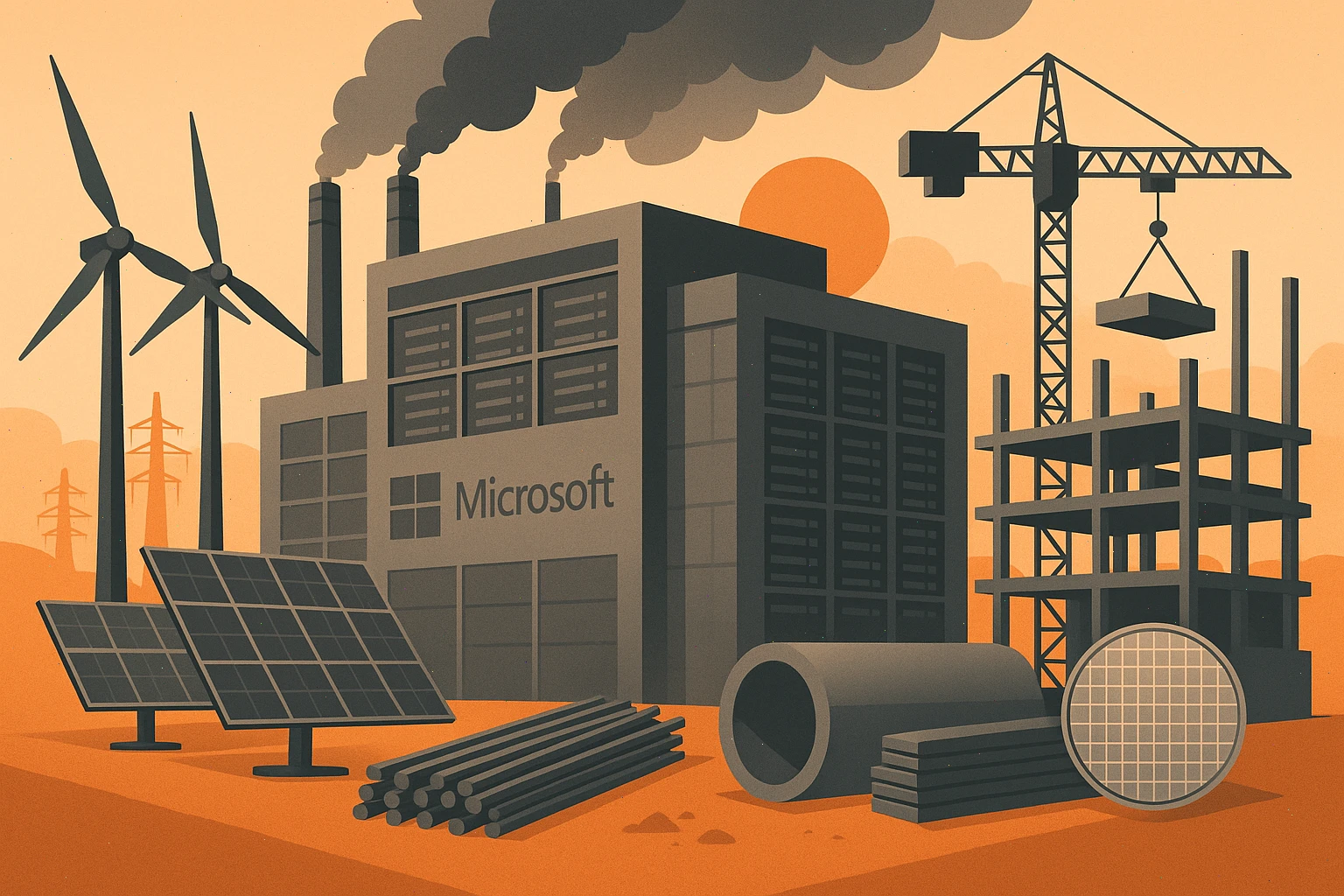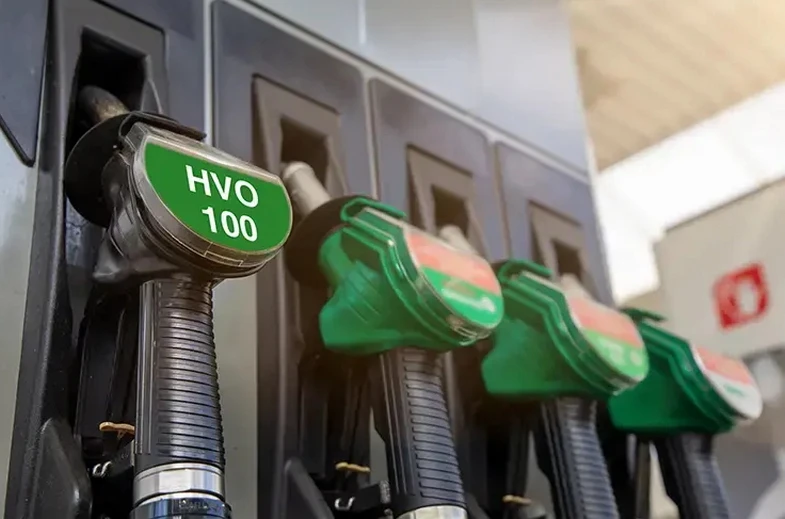Microsoft’s new sustainability report, released late last week, shows how a carbon-heavy economy can weigh on a company that wants to be carbon light.
Since 2020, the company’s carbon emissions are up 23.4%, mostly due to rapid data center expansion needed to support growing cloud and AI operations. Buying clean electricity is the easier part — the challenge lies in the carbon-intensive materials used to build the facilities, like steel, concrete, and computer chips.
Scope 3 Emissions: The Real Obstacle
“We reflect the challenges the world must overcome to develop and use greener concrete, steel, fuels, and chips,” said a Microsoft spokesperson. “These are the biggest drivers of our Scope 3 challenges.”
Scope 3 emissions — those beyond the company’s direct control — include raw materials, transportation, and purchased goods and services. In fiscal year 2024, they made up just over 97% of Microsoft’s total carbon footprint.
Data Center Construction Is the Biggest Contributor
The main source of Microsoft’s stubborn Scope 3 emissions is data center construction. Steel comes from fossil-fuel-powered blast furnaces, while concrete emits CO₂ both in its production and chemical composition. Though Microsoft invests in startups aiming to decarbonize these materials, their impact will take years to materialize.
Even computer chips are a problem — their production involves chemicals like hexafluoroethane, a gas thousands of times more potent than CO₂.
Clean Energy Isn’t Always Close at Hand
Despite investing heavily in renewable electricity, Microsoft faces logistical hurdles. Data centers aren’t always built near clean energy sources, forcing the company to rely on purchases from other regions. “Our electricity consumption has grown faster than the grids where we operate have decarbonized,” the spokesperson said.
Although total emissions in 2024 were slightly lower than in 2023, Microsoft still has a long road ahead to meet its 2030 goal: removing more carbon than it emits.
Progress Is Real — But So Are the Challenges
There are signs of progress. Microsoft now has a 34-gigawatt zero-carbon electricity portfolio and has signed deals to remove millions of tons of CO₂. Still, with 2030 fast approaching, its booming AI and cloud business — though profitable — makes hitting its climate targets more difficult than ever.



